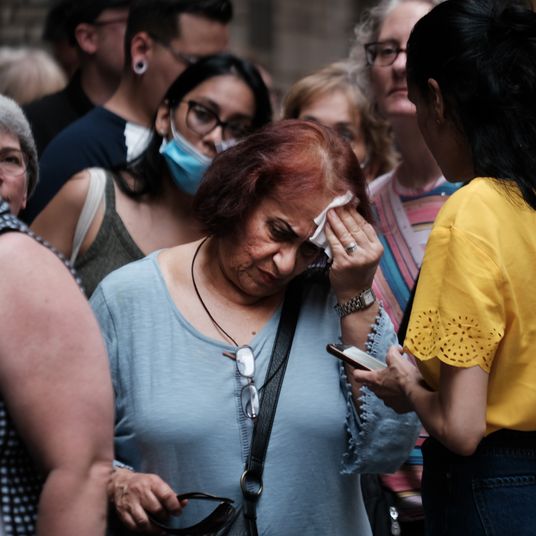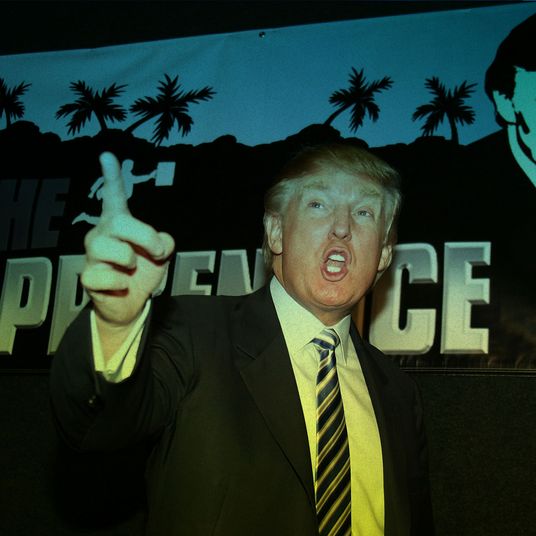
There’s a whole industry out there engaged in spinning polls and shifting expectations to show that Donald Trump is going to win by a massive landslide, sweeping godless woke liberalism out of power in Washington and instituting his long-promised era of vengeance and vindication. Presumably, some of this is harmless hype designed to attract MAGA eyeballs and keep Republican enthusiasm high. The more sinister possibility is that spinmeisters are creating the foundation for another Trump challenge to the outcome if he loses; after all, if you’ve been hearing for months that he’s far ahead, then any adverse vote count has to be “rigged,” right?
Beneath all the noise about Trump riding high is some actual empirical evidence that’s he’s improving on his 2020 performance. That’s most obvious in national popular-vote estimates: Trump lost by 4.5 percent in 2020 and is leading, albeit modestly, in 2024 national polls. But it’s also evident in particular states where he didn’t do well at all last time around. Lately, there’s a lot of buzz about Trump being competitive in supposedly deep-blue Virginia, as The Wall Street Journal reports:
Whether Virginia backs Donald Trump or Joe Biden shouldn’t even be a discussion.
The state hasn’t backed a Republican for president since George W. Bush in 2004.
But early polls showing Trump, the presumptive Republican nominee, cutting into the Democratic president’s lead have served as a wake-up call for Virginia Democrats, who acknowledge headwinds with voters dissatisfied with Biden’s leadership. Republicans say that if Virginia is even remotely on the table for Trump, Biden is in serious trouble in traditional battleground states such as Wisconsin, Michigan and Pennsylvania.
Behind this Republican excitement are two polls, one from Fox News in June and another from Roanoke College in May, showing Trump and Biden tied in the Old Dominion. While that’s hardly a big dataset, it is indeed eyebrow-raising: In 2020, all but one public poll of Virginia taken after May showed Biden with a double-digit lead, and he ultimately won by 10 percent. Virginia was also carried by Barack Obama in both 2008 and 2012 and by Hillary Clinton in 2016. So it’s a blue state turning purple, and some would say that has big implications for the rest of the country!
Unfortunately for this take, short-term trends in particular states don’t always mean a lot. I’m old enough to remember that before Obama won Virginia in 2008, the state went Republican for 11 straight presidential elections. It was the only state of the former Confederacy to go against Jimmy Carter twice. Big-time national losers George H.W. Bush (in 1992) and Bob Dole (in 1996) won there. Biden’s double-digit win in 2020, moreover, reflected a fairly sudden Democratic surge: Obama won the state by less than his national popular-vote margin in 2008 and by exactly his national margin in 2012; Clinton won Virginia by a hardly overwhelming 5 percent.
Obviously, if Trump actually wins Virginia, it would be a big deal, putting 13 precious electoral votes he’s never won before into his column. But a tightened margin in any given state really just means the favored party will have to decide whether to put resources there that had been earmarked for states previously thought of as battlegrounds. If there’s a national shift, it’s likely to be reflect in national polls, and there Trump’s lead doesn’t look like the stuff of landslides (0.8 percent in the current RealClearPolitics averages of head-to-head polls).
The reality is that we may not know what the 2024 battleground landscape will ultimately look like until a lot closer to Election Day. Don’t forget that the identity of the closest states can and does change. Florida was the ultimate battleground state of all time in 2000; now it’s considered reliably red. That’s even truer of Iowa and Ohio; the latter is where the 2004 presidential election was decided, and the former was dead even in 2000 and 2004 before lurching toward Democrats in the two Obama elections and then massively toward Trump in 2016 and 2020. And it’s not just newly red states that have changed complexions: In living memory, New York, California, and Hawaii were presidential battleground states.
Is there a theory as to why Trump might be doing significantly better in Virginia without it necessarily signaling a big national lead? Yes, actually. National polls are showing Trump making gains among young and non-white non-college-educated voters, and Biden making gains among white college-educated voters. This may shift each candidate’s vote share in various states without flipping them, as Sean Trende recently noted:
One doesn’t have to be gifted with a particularly vigorous imagination to see what could happen here: Trump has substantial improvements among non-white voters, driving gains in some red areas (like Texas) and flipping some important swing states. He also makes gains in some blue states like Virginia, New Mexico, California, and New York, but is unable to flip them because the hole with educated whites is just too deep. Then, in relatively white Rust Belt states like Wisconsin, Ohio, Pennsylvania, Minnesota, and Michigan, very little changes.
So the widespread assumption of a built-in Republican advantage in the Electoral College may actually be outmoded. You can’t look at Trump’s small lead in national polls and assume this means he’s far ahead in the race for EVs that really matters, as Trende points out:
The result could easily be Trump winning the popular vote, but Biden eking out a narrow 270-268 Electoral Vote victory … It’s a really narrow road to victory for the former president right now, but it is also a perfectly plausible path.
So perhaps MAGA folk should hold off on the premature victory celebrations, in Virginia and elsewhere. The shape of the election is still developing.






























